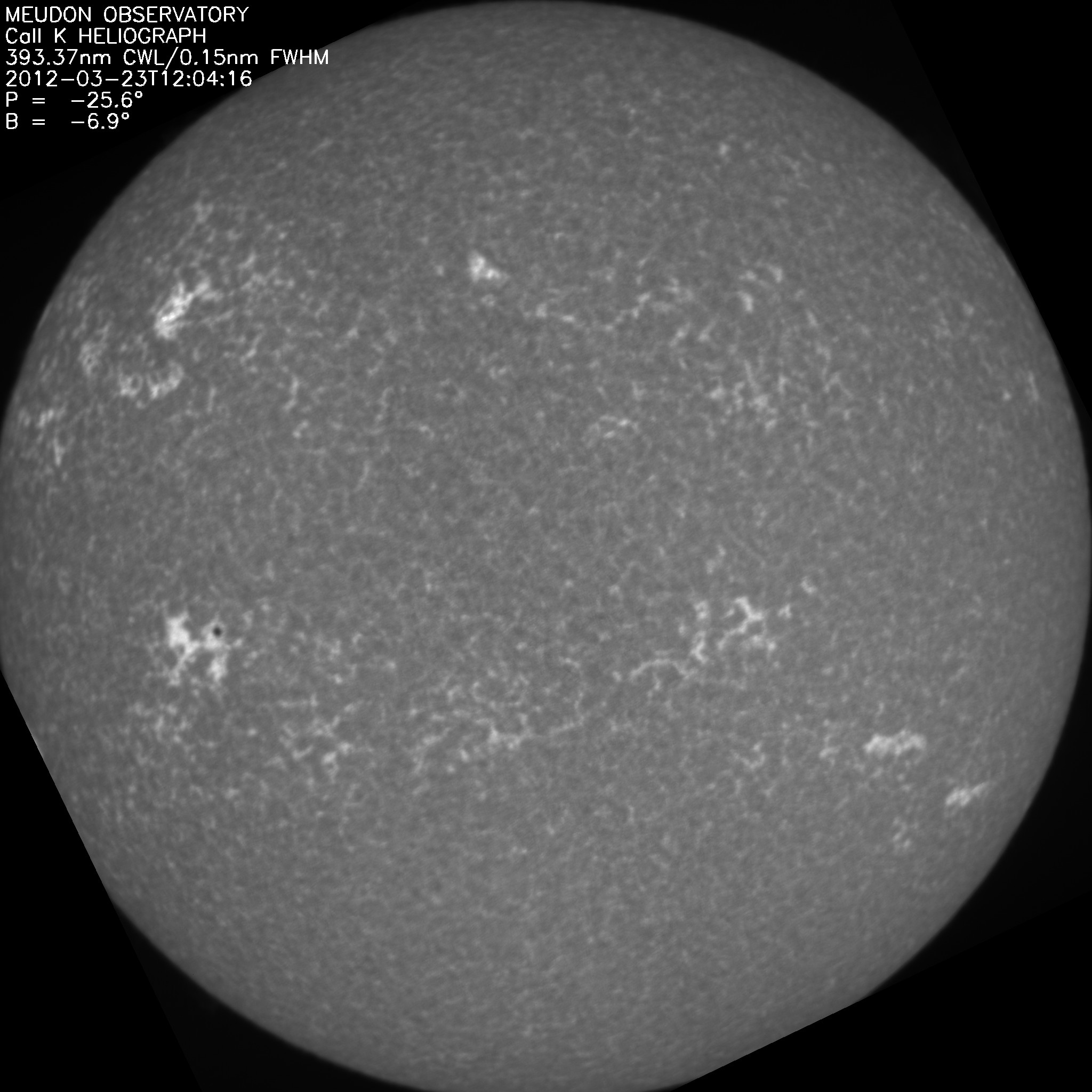| Calcium Chromosphere Observed from Meudon Observatory |
 |
The calcium datasets consist of full-disk images of the sun in Calcium (Ca) II K wavelength
(393.4 nm). Ca II K imagery reveal magnetic structures of the sun from about 500 to
2000 km above the photosphere that are not evident in white light images. The chromosphere
is an extremely dynamic layer of the sun consisting of a mixture of hot ionized plasma
and cool gas. The presence of calcium ions in the chromospheric (along with other
ions such as helium and hydrogen) lead to the absorption of radiant emission from
the sun. The Ca II K absorption lines are extremely sensitive to local magnetic fields
wherein the presence of stronger magnetic fields results in less absorption (brighter
features) than weaker fields (more absorption = darker features). Unique features
of the chromosphere evident in Ca II K are plage, pores, supergranulation cells and
the chromospheric network. Also observed in Ca II K are solar features typically discussed
in the context of the photosphere, including sunspots and faculae. Sunspots in photospheric
observations appear as dark regions due to the cooler temperatures (~3000 oK) of the
overlying gas compared to the surrounding solar surface (~5500 oK). Although sunspots
are regions of intense solar magnetic activity (i.e. less absorption), the lack of
radiant emissions from the underlying photosphere results in chromospheric sunspot
regions that remain darker than the surrounding sun. Faculae, on the other hand, are
brighter regions in chromospheric observations which result from the concentration
of magnetic field lines between solar granules (solar convection cells). Closely associated
with faculae are bright areas of chromospheric plage, also referred to as floccule,
within solar active regions that are associated with sunspot formation. Solar pores
are actually small sunspots that have not yet formed (and may never form) into the
standard picture of a dark central umbra surrounded by a somewhat brighter penumbra.
Supergranulation cells are large regions of convective horizontal flows (larger than
individual granules) wherein solar material and an embedded magnetic field flow radially
outward from the center and downward at the outer boundaries causing the web-like
appearance of the chromospheric network structure. |
|